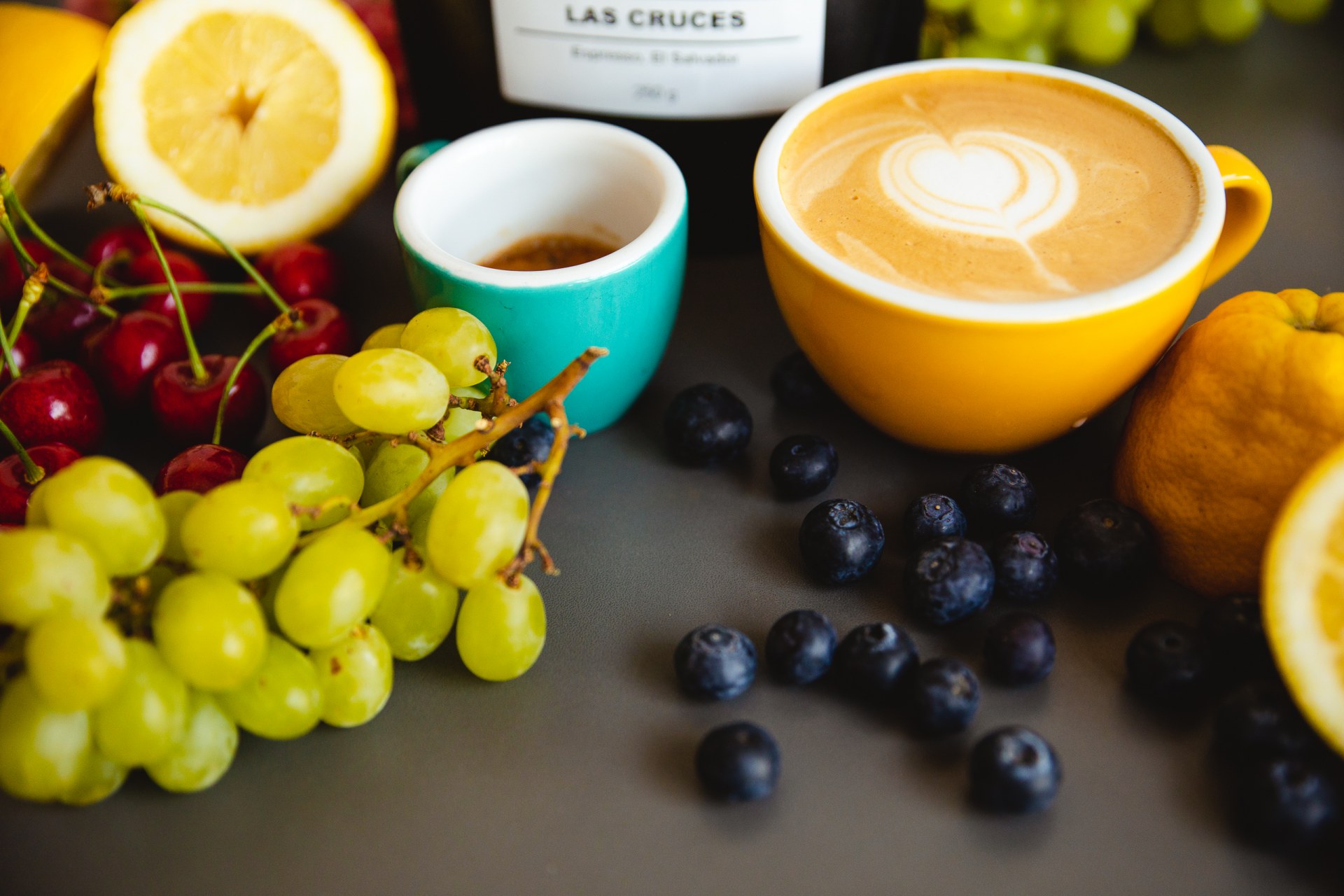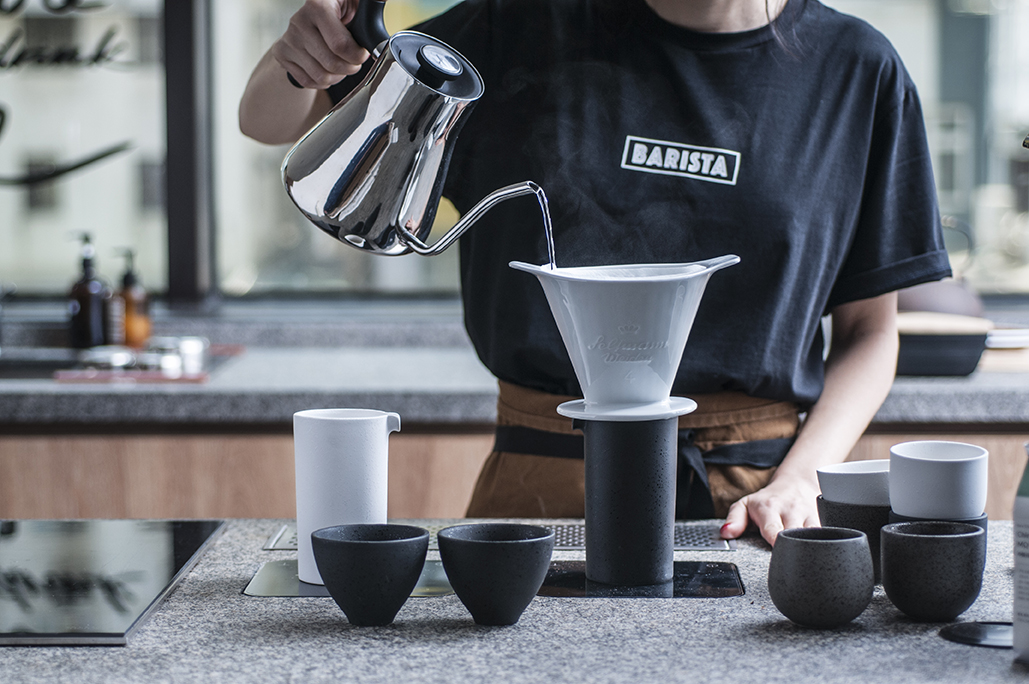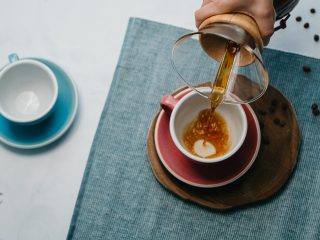So you have those great speciality beans ready and fancy espresso machine or a designer dripper set sitting pretty on your countertop. There’s even a state of the art grinder just waiting to grind those tasty beans. All that’s left now is to grind, brew and serve yourself the perfect coffee… Wait, what do you serve that coffee in? Should it be a cup, a hefty mug or a special goblet? Is the vessel an essential ingredient to the coffee drinking process? If so, does the perfect cup exist?
As usual – it depends.
It depends since there are many different types of coffee, as you are well aware. It may be an espresso, a foamy cappuccino, a big mug of black coffee or a fancy speciality drip. Each of those will require a different vessel and the definition of a “perfect cup” will vary. Why? Because each of the aforementioned infusions will be unique in texture, aroma and flavor and hence and different elements will need emphasizing in order to fully enjoy that cup of coffee.
Espresso and moka pot
Let’s start with the basics, that is coffee from either an espresso machine or moka pot. Both coffees will be rather similar – small amount of a powerful infusion will result in a quick drop in temperature. In case of espresso there is also crema we have to deal with. Crema, a thick brown emulsion is a very desirable component of a properly brewed espresso. To maintain all the characteristics (crema and temperature), a good espresso cup is small in size with thick walls and rounded bottom with no sharp edges.
Small capacity and a narrow diameter combined with thick ceramics make the coffee temperature more stable. The aroma is also more concentrated which plays an important role in an infusion of a small size. Gently declining walls form a basin at the bottom of the cup, preventing the coffee from splashing and diffusing, allowing it flow freely and maintaining its original texture.
Loveramics Egg cups /fot. Loveramics
The most popular espresso cup shapes are tulip and egg ones – you can check out the ones Loveramics has in the offer. They work exactly the same so choosing one or the other is just a question of which ones are more visually appealing.
It is worth noting that those small cups are best for the so-called single shots (a 30-40g espresso). It leaves some space for stirring the coffee (a very important and distinctive circular movement of the whole cup) and allows for the aromas to whirl in the space between the walls of the cup. If there is an excessive amount of liquid
the aromas will spill over the edges instead of hitting your senses with the first sip. If you prefer a bigger espresso or a double shot it is best to use a larger, 150-200 ml cappuccino cup.
Cappuccino, latte or flat white?
White coffees leave a lot of room to impress, though the basic mechanics are pretty much the same – a shot or two of a fine espresso and the right amount of properly frothed milk will make for that perfect cup. What does constitute a properly frothed milk? It should be smooth and lush, like a yogurt. Never steam your milk to the point where it starts looking like swiss meringue.
The perfect cup for a white coffee needs to meet certain standards, especially if it is to be used for latte arts. Since crema will be essential to creating the perfect milk drawings, the cup should support the espresso texture well. Again the round basin at the bottom and gently sloping walls will play an important factor.
The drawings Agnieszka Rojewska created in the final round of 2017 World Latte Art Championships in Budapest have won her 3rd place. The official cups for the Championships, Loveramics Egg. /photo: M. Rzońca
This specific shape makes it easier to maneuver the milk. A vessel that expands and opens up towards the top provides more space atop which one can create various flowers, rosettes or shrimps. The smooth insides of the walls do not interfere with structure of frothed milk. Cappuccino and latte are not exactly focused on the aroma sensations, hence they are usually filled to the brim, making even the simplest pattern on top look very attractive.
Pour-overs, alternatives and other black gems.
When we drink those big, black coffees from a coffee machine, chemex, dripper, aeropress or any other alternative brewing device, we can get a little crazier when it comes to choosing the right vessel. Because texture does not play a role here and crema is non-existent anyhow, the shape of bottom or walls will not matter nearly as much as it does when it comes to espresso based infusions. You can easily pour a big mug of coffee and cherish it on your favourite couch after a long day of work. It would be good if the said cup is made of thick ceramics (so your coffee does not get cold too quickly), a good handle and smooth finish.
Loveramics Brewers /photo: Loveramics
BUT, especially with speciality coffee, the aroma plays an important role. It is with speciality that we can marvel over subtle cassis, chocolate, cherry or herbal scents. That is why some companies created dedicated cups, design to enhance those aromas.
The newest invention are these Loveramics Brewers goblets. Consisting of a narrow server designed to slow down the natural cooling and three differently shaped little goblets. According to the manufacturer each shape is designed to bring out different flavor notes – fruity, sweet and nutty ones.
The porcelain here isn’t too thick so the infusions cool down faster. You may wonder why the walls shouldn’t be too thick this time – speciality coffee releases its full bouquet of flavor as it cools down and the aromas get richer when it reaches a certain temperature. It is a paradox of sorts.
Back to alternative brewing – because those methods are vastly popular among hipsters and people who value good design just as much as flavor, you can find some really fancy cups now.
It also shouldn’t come as a surprise that cafes serve black alternative coffees in large cups – same ones they use for lattes or cappuccinos. Not only do they do a good job flavor and aroma-wise, but are simply nice to drink from.
Just to make it clear…
Sure you can use other cup shapes or different designs and still get a perfectly fine espresso or a beautiful latte art. It’s worth remembering however that the tweaks and details of the perfect cup are to help you get the best possible results.
Which cup is your favourite?














